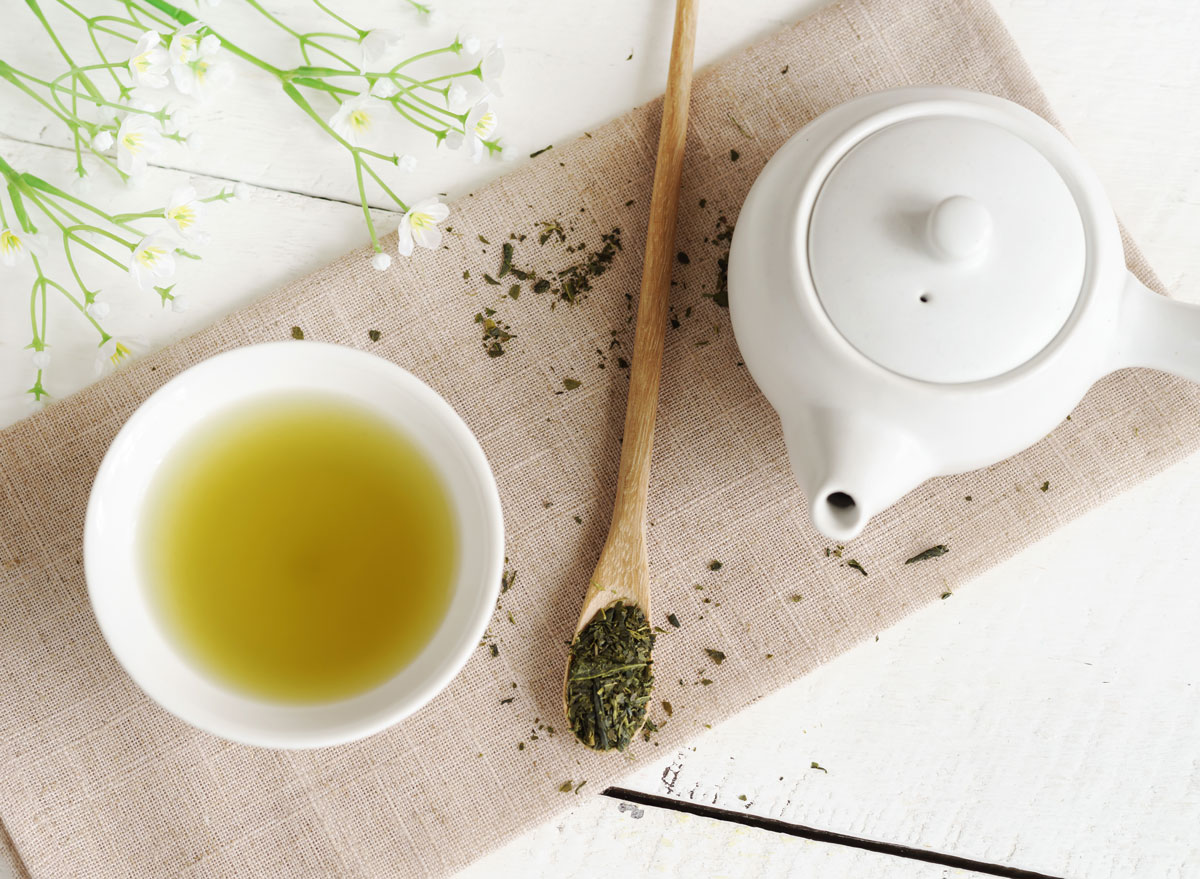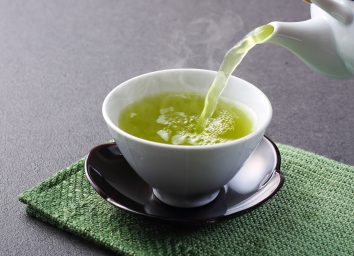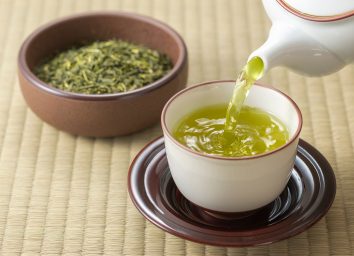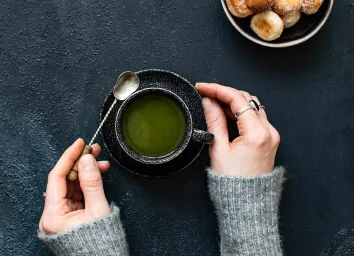This One Trick Maximizes Green Tea’s Benefits, New Study Says

Drinking tea can be an easy way to help keep your blood pressure levels in the healthy range. When combined with regular exercise, a healthy diet, and some morning stretches, this warm beverage could help stave off hypertension.
Now, new research suggests that one simple trick may help you make sure you’re getting your money’s worth out of that cup of tea. The secret? Warming your green tea to a minimum of 95 degrees Fahrenheit can help activate its blood-pressure-lowering effects. (Related: The 7 Healthiest Foods to Eat Right Now).
The study, published in the journal Cellular Physiology & Biochemistry, found that a protein called KCNQ5 plays a key role in enabling tea to fight hypertension. The protein is part of the outer membrane of our cells, which helps our cells control how much potassium flows in and out, the study’s corresponding author Geoffrey W. Abbott, MSc, PhD said to Eat This, Not That!
“KCNQ5 is therefore referred to as a ‘potassium channel’ protein,” he said. “KCNQ5 and other ion channels are essential for controlling the electrical activity in our bodies, required for processes such as thought, movement, muscular contraction, and the heartbeat.”
The study found that heating your tea helps open up this channel in your body, which in turn, helps your cells get rid of potassium ions, which can lower your blood pressure. You don’t even need to keep your tea hot—as long as it’s been heated once, it’ll do the trick.
Abbot explained, “We found that the compounds present in the once-heated tea (even when cooled back down again) were more effective at interacting with KCNQ5 in such a way as to open the KCNQ5 pore to allow potassium ions out of the cell. This activity promotes relaxation of the blood vessels and helps lower blood pressure.”
However, when you’re making a cup of green tea at home, you’ll want to use much hotter water to extract all of the healthy antioxidants and flavors from the tea.
“Make sure you are brewing with the recommended temperature from the tea seller—most likely it’s lower than what you use for your oolong and black teas, between 165-175 degrees Fahrenheit,” Elena Liao, the founder of Té Company Tea in New York said.
“For good quality loose leaf teas, try to brew the teas openly in your brewing vessels—not constrained by a small tea infuser ball or paper sachets—to allow physical space for the tea leaves to expand and unfurl. It’s the best way to get the most flavor out of your tea.”
Liao adds that you should eat beforehand if you’re planning on drinking a lot of the tea, as green tea can be “a little harsher on your stomach and could lower your blood pressure.”
For more on how to drink your way to a longer life, check out these 5 Beverages That Can Add Years to Your Life, According to Science.








